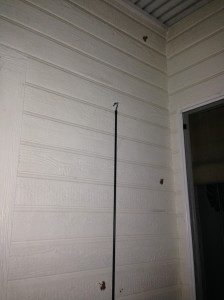When I was a graduate student in natural resource management and regional planning, I spent the summer of 1984 in Puerto Rico working on a conservation assessment and plan for a coastal protected area with the Department of Natural Resources in San Juan.
One of the much loved frog denizens of the wet habitats of the island (you name it; gardens, coastal swamps and wetlands, rainforests,…) was the famed and ‘cute’ Coqui. The Coqui is the size of a quarter but has a sharp, very, very loud and piercing, and normally melodious call. The call is a 2 tone – low to high chirp, from which its name is derived. I have made some recordings of their sounds around our house, but this video is a better representation.
When Jessica and I visited Hilo in 2014 to scope out her sabbatical, we had dinner with a graduate school classmate of mine who was also in Puerto Rico that summer. He has been the University of Hawai’i-Manoa Extension Forester on the Big Island for the last 25 years. When we arrived at his house which is upslope of a riparian zone above Hilo, I said to him, ‘Hey what is all that racket – it sounds like a bunch of Coqui!” He rolled his eyes, and said in fact that is exactly what they are! Oh no! Invasives!
What is loved in one locale where it belongs ecologically is hated in another where it is sadly out of place!
The Coqui arrived in Hawai’i hidden in exotic tropical garden plants imported from Puerto Rico. Why one would need to import tropical plants to Hawai’i when there is an abundance of beautiful native flora is a question that should be asked of developers, landscapers, and nurseries all around the islands. But it is too late for the most part. There are intense infestations in many places on the Big Island as the map below shows (and this is now 7 years old). The riparian forest zone of one of Jessica’s sampling streams, the Kole Kole, is deafening at night, especially during or after rain.
(map courtesy of UH College of Tropical Agriculture and Human Resources)
The Coqui are in the bamboo hedges around our house, come up onto the lanai and its surrounding walls, climb the backside of the house, and hop around on the gravel under the house. They are not like locusts mind you, but I have committed numerous acts of murder I confess (also against the introduced Cane Toad, otherwise known as the Giant Neotropical Toad).
The Coqui and the Cane Toad have had a huge impact of the native insect fauna of Hawai’i. In addition, without predators such as snakes that keep their numbers in check in their native Puerto Rico, the Coqui qualifies as sonic pollution to be sure. In fact some real estate appraisers are now downgrading house values near bad infestations.
Neighborhoods in Honolulu are now being infested, and now the issue is getting some crisis attention. But residents of the outer islands comment that Oahuans would not listen when Big Islanders and others projected the future problem and the crisis, now only when the Coqui has invaded their public parks and backyards are they paying attention. Too little, too late for the Big Island.



